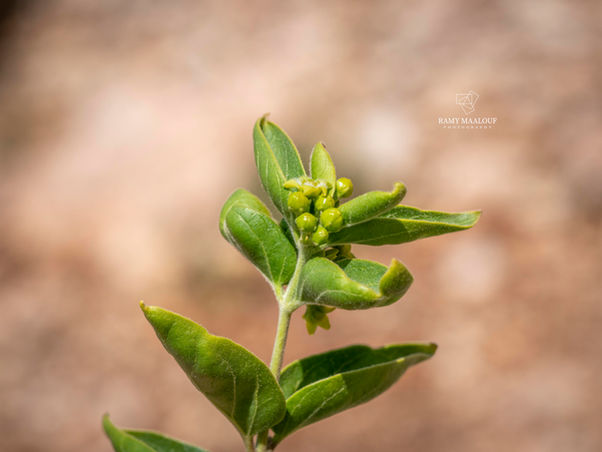Family |
Apocynaceae
Vincetoxicum dionysiense
Mouterde
Leb. Syr.
Vincetoxicum dionysiense Mouterde
First published in Flore du Djebel Druze: 164 (1953)
(Nouvelle Flore du Liban et de la Syrie, vol. 3, Pl. XVIII nº 2; 1983)
• Life-form & habit: Perennial, pluricaulous herb 30–60 cm tall or more; stems initially erect and flexuous, later sometimes twining near the apex; finely puberulent throughout.
• Leaves: Ovate, acute, glabrescent or slightly puberulent beneath along the veins; petiole short.
• Inflorescence & flowers: Dense cymes, often superposed in 2–3 series on the same peduncle; pedicels very short. Calyx and corolla small (2–3 mm), calyx glabrescent, membranous, faintly ciliate on the margins. Corolla lobes yellowish-green, quickly blackening when dry, glabrous outside, slightly pubescent inside. Corona with short, truncate lobes slightly exceeding the gynostegium.
• Fruit: Follicles usually paired and divergent, nearly smooth or very finely puberulent.
• Phenology: Flowers May – June.
• Habitat & elevation: Moist places in springtime, especially along small torrents; montane regions.
• Lebanese distribution: Known from Laqlouq (Mount Lebanon).
• Syrian distribution: Qanawât (under V. parviflorum), El-Krês near Salkhad, from Soueida to Fontaine des Bédouins, between Kafer and Salkhad, south of Kafer, and Es-Safa.
• Native range: Endemic to Lebanon and Syria.
• ⚠️ Taxonomic note: Distinguished from V. canescens by its more slender, often twining stems and much smaller flowers (2–3 mm). The species name refers to the ancient town of Dionysias (modern Soueida). It is closely tied to humid spring habitats and appears somewhat calcifuge










